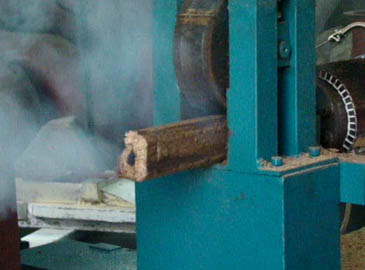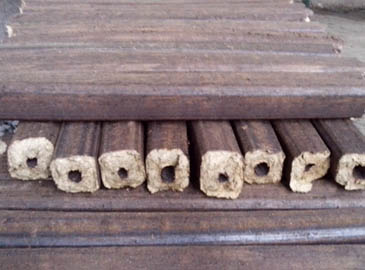Briquetting Challenges Across East Africa-II
Briquetting Challenges across East Africa--II
Access to Finance
One of the major challenges that micro entrepreneurs faces in expanding their business is accessing the appropriate finance. Most micro entrepreneurs lack the capital to engage in marketing activities, research and development or to purchase equipment that would help their business to expand. There are many challenges to bringing finance to micro- and small-scale entrepreneurs at the base of the pyramid. A lack of collateral, high transaction costs, small loan requests and immature technologies discourage lenders, while limited access to bank accounts, high interest rates and illiteracy put off many borrowers. Indeed for many of those that are not highly literate, especially among women, a formalised process of borrowing seems complicated and often some form of training or motivation needs to be provided. On top of this, many micro- entrepreneurs lack the ability or the motivation to make regular savings in order to invest in their own businesses or are unable to plan far enough in advance to do so. Larger businesses looking to expand their production from 200 or 2,000 tonnes per year tend to be better placed to receive loans as the people running them are typically better educated and their business structures proven. Nonetheless they still face many challenges in obtaining capital. At this scale, a large step-up in investment is required to move from utilising locally fabricated machines to imported ones and organic growth is an unlikely route to achieving this. Reflecting on the few successful larger commercial businesses in the East Africa region, almost all have benefited from grant funding by government and non-government organisations. While commercial investors are still too risk adverse towards this young industry, it would seem that seed grants are still required to fuel growth. Evidence from businesses that have been linked to finance through GVEP’s DEEP programme demonstrate that investment from commercial institutions can indeed lead to a financially sustainable energy enterprise.


Business Premises
A crucial factor in the success of a briquette business is the size and location of its premises with respect to both the source of feedstock and potential points of sale. This is particularly significant in the case of micro-scale producers who rarely have access to private transportation. For the urban population, demand is high but the micro-entrepreneurs lack the capacity to access the market as they produce in too small quantities to justify the cost of transportation to large towns. Having sufficient space to dry briquettes is too often a limitation in production and in order to maintain continuous production a drying area of at least 3 days output is needed (the typical sundrying time). Many micro- and small-scale entrepreneurs are often reluctant to move their business premises, even when there is a valid business case to do so. This is usually because of personal attachments to their current location or an absence of ambition to do so. In urban areas high rent and business rates can also make a business unviable.
Until a level of production is reached where industrial drying techniques become feasible, the available land area will largely remain the limitation to the output of most of these businesses.
Supply Limitations
Many micro-enterprises are producing in such small quantities that getting enough feedstock from locally available waste is not at an issue. However, for an increasing number that are seeking to increase their production it is becoming more of a challenge. Many briquette producers use waste charcoal dust as the primary feedstock, which is a limited resource and already businesses supported by GVEP are finding that the availability is not enough to scale up their production to the levels necessary to meet the demand. In addition to this, charcoal vendors are becoming ever more conscious of the commercial potential of their waste and as a consequence are raising the price at which they sell. The result is renewed attention being given to alternative biomass and agricultural residues.
However this gives rise to new challenges associated with availability and collection of raw materials, often determined by the willingness and capacity of waste owners or producers to collaborate in a briquetting venture. Although the production levels of agricultural residues are high, the geographic spread of many of the small holders willing to contribute makes collection difficult and expensive. The challenge is finding a single large enough source of feedstock to supply a medium-sized enterprise. Residue producers often attract competing uses for potential feedstocks such as animal fodder and fertilisers as well as rural industries that fuel biomass boilers with raw biomass.
Consumer Awareness
Despite being around for a number of years, knowledge of briquettes and how they differ over firewood and regular charcoal is largely unknown among populations in Uganda. In rural towns in particular, consumers have not yet been sensitised to evidence of potential fuel savings and health benefits that can be achieved through the use of briquettes. A benefit of some carbonised briquettes is a longer burn time over charcoal, which is an advantage not immediately apparent to a would-be buyer when faced with a higher initial price. Without sufficient marketing, and often costing more per unit weight than charcoal, the product is not likely to sell. Consumers often use non-carbonised briquettes in the same quantities that they do wood despite their higher density and ability to pack better into the stove. The result is that the stove burns too hot, which has been seen to discourage users.
This has meant that the domestic markets have been the hardest to penetrate, and while enough opportunities exist to supply institutions, the health and lifestyle benefits that briquettes can bring to households are yet to be fully realized.
Environmental issues
Traditional charcoal production has led to severe deforestation around the biggest cities in Tanzania causing environmental stress and degradation, diminishing watershed management and rising vulnerability towards climate change. By replacing wood-based charcoal with sustainable fuels it is possible to improve the livelihoods of millions of people, increase natural carbon sequestration and support the communities’ ability to respond to the challenges caused by climate change. As cultural traditions and household equipments rely on charcoal utilization, the most efficient way to respond to the challenges raised by non-sustainable wood charcoal is to produce similar fuels from renewable sources such as agricultural waste.
In east African, people use a crude way of producing fuel briquettes by hand. Although hand-pressing the materials into a solid ball can produce high-density briquettes because the heat value of the briquettes increases with density. The use of briquettes as fuel has many advantages in that an otherwise waste material would be turned into a profitable resource and so reducing the environmental problems of disposing these materials into rivers and lakes. Secondly, the trees and other useful biomass materials will have more time to generate. An aspect that must be considered however is that agricultural residues are natural soil conditioner and their use as energy might negatively impact on the quality of agricultural soil.
It is reported that Legacy Foundation will strengthen the biomass briquette training services and networks in East Africa. Through provision of essential briquette making equipment, communications technologies, training and marketing materials and transport resources, the project will: --increase the direct income of over 1000 women as new biomass briquette producers in Tanzania, Uganda, Kenya and the South Sudan --decrease deforestation/ fuel wood demand by 15000 tons per year.
The project will provide essential equipment to each of the biomass briquette training service partners in the East Africa region. This will ensure that the biomass briquette training services already in place function and thrive. Essential support will include: funds for advertising in local media, telephones, a computer and printer, briquette presses, training rooms, reliable transport, grinding mills, marketing and advertising materials.
KMEC is capable of offering a package of project with delicate designs and high-quality
briquette equipment to move forward with clients from all over the world!
------------------------------------------------------------------------------------------------------------
Straw briquette machine
Straw briquette machine refers to the special equipment which compresses biomass materials like straw into efficient, environment friendly fuel or fodder. Finished products of straw briquette machine are being used as fodder or

